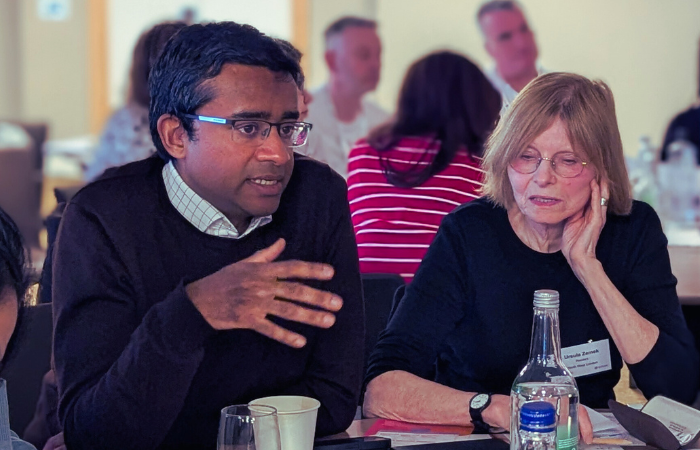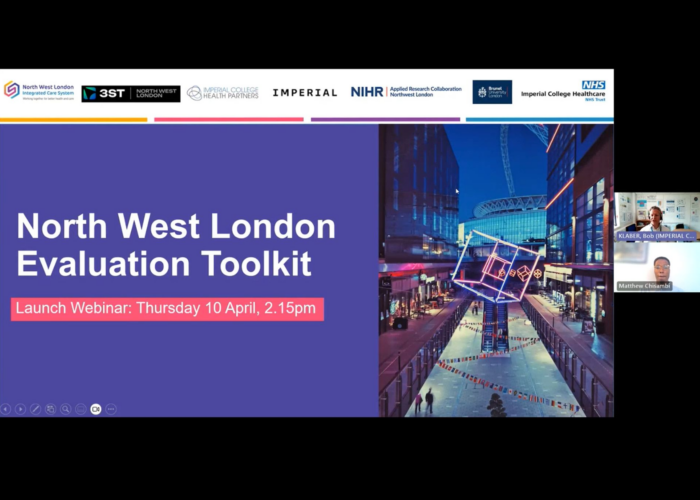 How can health system leaders drive population health management from the planning stage and put words into action?
How can health system leaders drive population health management from the planning stage and put words into action?
A population health management programme is built on a lot of planning – designing the approach, linking data, doing the analysis and so on – but all the planning in the world won’t make any difference to the health of a population (a very dry word for the communities we serve) until all the partners across an integrated system swing into action and make actual changes for patients and residents.
Planning is clearly a vital part of making change – analysis generates intelligence that systems can use as the basis for making decisions and that partners can use to mark out a way forward. The key is not to spin your wheels in more analysis, more discussion, more planning in the hopes of getting it absolutely perfect, but to take the plunge and do something different on the ground that uses our resources more effectively and improves where, how or what care a person is offered.
We talk populations but we want change for the individual
Population health management is about using data to really understand the people we serve, not just from the perspective of our part of the system or even just from the health perspective, but in a much more holistic way. What kind of challenges and opportunities do they experience? How, when and where do they use services? What kind of circumstances are they facing in growing up, living their life, raising their families and growing old? How do we use all that insight to plan and deliver services that are fairer, more proactive, and more responsive to needs and circumstances, and have greater impact on people’s health and wellbeing? That’s the real mission of population health management. Even though we talk about populations, in the end we want individual care to be right for each person – the data is there to bring the individual and their care team together to learn from one another about what is possible and what matters. That way we use our resources for greatest impact.
Making that change a reality takes partners from all parts of the system. Academic health science networks like ICHP are building up a vast amount of expertise and experience in helping system partners work together to deliver population health management. They help them use data to choose a population or cohort to target, such as frail older people, children with asthma or people at risk of developing diabetes. They support with analysis using a range of methods such as population segmentation, risk stratification and impactibility, but critically, they can help them to get beyond planning and agree together about the right actions to take and then crack on and make all that planning a reality.
Beware perfection paralysis
Population health management creates learning health systems: iterative cycles of learning and clinically-led improvement combine with the daily discipline of gathering the really unique data – the goals, priorities and preferences of individuals. Because we are learning, our job is to commit to doing things differently and then to keep making that better, not chasing the ever-elusive goal of planning the perfect project, the perfect model, the perfect day.
For any system, there may be all kinds of barriers to getting population health management up and running, but those shouldn’t hold you back. Your system may not have integrated health and social care data yet, but that doesn’t stop you seeing what you can do with the data you have and starting small. You may not have decided on the perfect way to segment your population, but spending a year trying to figure that out when you could be making positive strides misses out opportunities to make a difference now. One thing is for sure: if you only plan, nothing will change.
‘You can’t plough a field just by turning it over in your mind’
The real challenge of population health management is developing truly integrated care with everyone working together, not just sitting in a room, agreeing to a plan, then walking away and carrying on as before.
System leaders can make planning become reality through creating a culture of mutual accountability among system partners for the health of their population. The fundamental mission becomes the collective ambition to use resources for greatest impact. Partners enact that mutual accountability by signing on the dotted line for change so that new interventions can be delivered.
Systems that are struggling to step from planning into the action phase should ask themselves whether they have done all they can to facilitate this new way of working. Do all the partners know and trust each other, do they know that population health management isn’t a task for the health service in isolation and do they understand the benefits to everyone of this approach to health and wellbeing?
Population health management offers a world of opportunities and system leaders can help system partners to be mutually accountable and to commit resources to move things forwards, starting small to prove that it works and taking everyone on the journey with them.
We are all coming to terms with the changed world around us, grappling with creating a new Covid-informed normal. We have seen the power that an imperative like a pandemic can have – the flip to digital first which, just weeks before, seemed like the right direction of travel but on a long road to delivery happened in a matter of days. When the will is there, we know we can work together and rapidly to make big changes.
By Andi Orlowski, Deputy Director of Business Intelligence, and Amy Bowen, Head of Population Health at NHS London.



